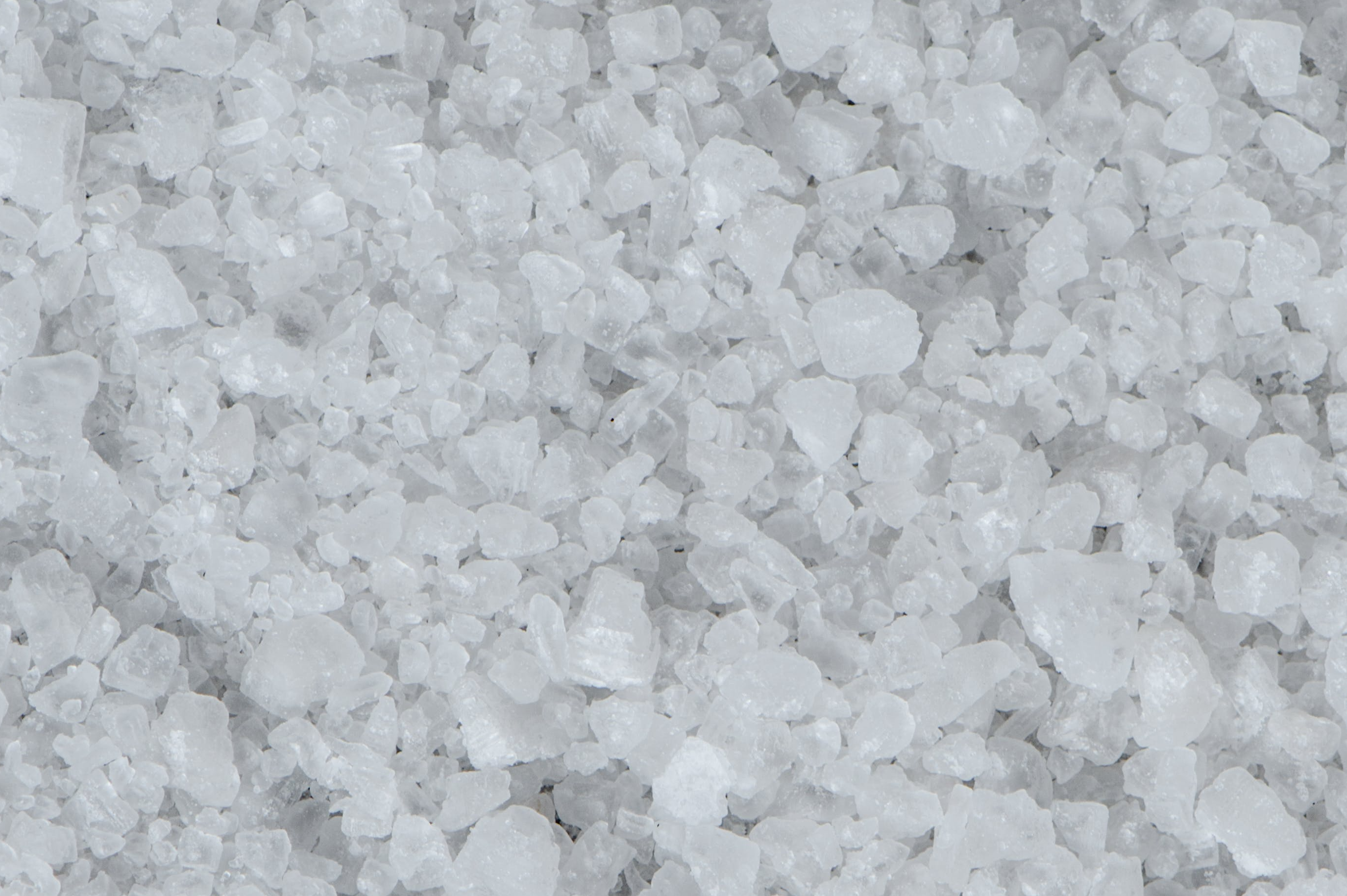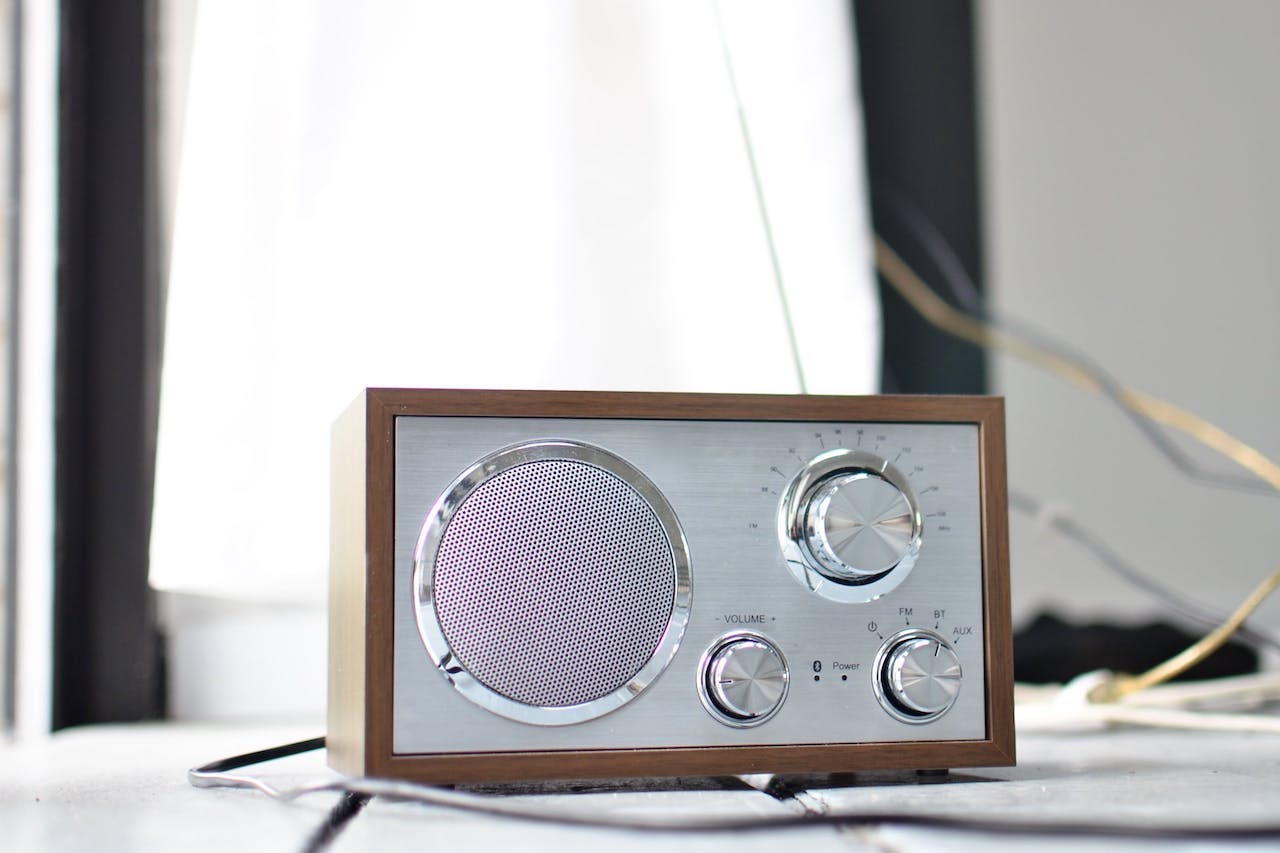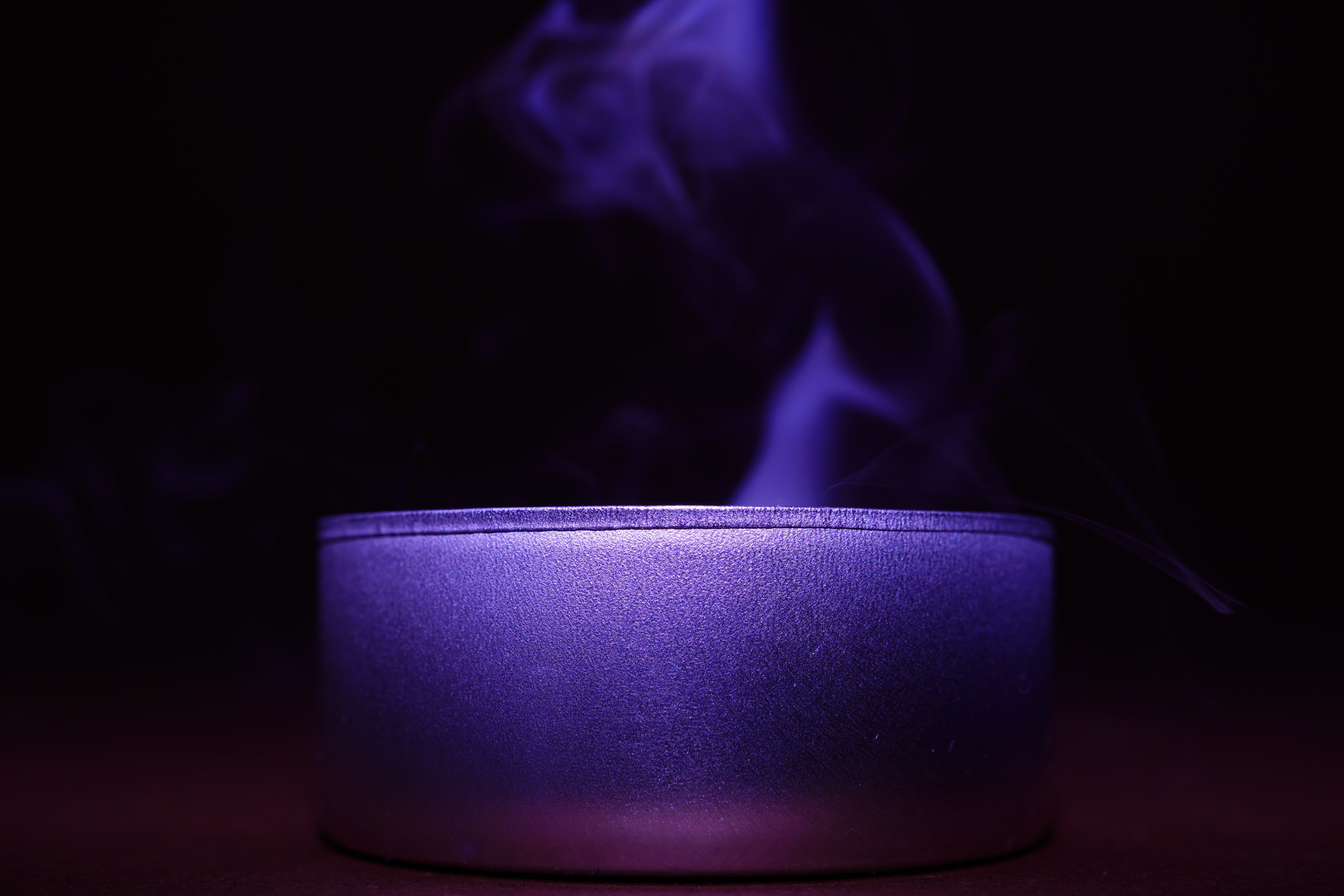- HOME
- Infrared Sauna Benefits
- Halotherapy
Can I Add Salt Therapy To My Infrared Sauna?

There is a relative newcomer in the arena of infrared saunas: salt therapy, also know as halotherapy [1]. Its powerful healing effect, particularly for skin and respiratory problems, has been known for hundreds of years.
However, it's only recently that it has been introduced in the infrared sauna space. A great moment to have a closer look into it.
A quick tour of the blog post
- What is halotherapy?
- Recent halotherapy research
- Science of infrared saunas
- The joint impact of halotherapy and infrared sauna
- Integration of halotherapy in infrared sauna
- Halotherapy and infrared sauna at home
What is Halotherapy?
A rich history
The healing properties of salt have been recognized in various cultures for centuries. As far back as the time of the Ancient Greeks, Hippocrates recommended regular saltwater inhalation for respiratory relief.
Then a jump to the Middle Ages to the salt mines of Eastern Europe. Historical records chronicle an intriguing observation: salt miners showed remarkably low incidences of respiratory disease, a stark contrast to the general population.
The practice of seeking well-being in salt environments changed over time from natural caves to more structured environments. By the 19th century, the therapeutic use of salt mines became increasingly formalized, especially in areas such as Poland, where the microclimate of salt mines was thought to provide healing benefits.
The scientific basis for halotherapy was laid in the mid-20th century by Professor Mieczyslaw Skulimowski. While working at the Wieliczka Salt Mine in Poland, he coined the term "underground therapy" to describe the therapeutic use of underground salt mine environments.
This innovative approach gained recognition and in 1964 the Wieliczka Salt Mine was officially designated as a therapeutic site, attracting people from all over the world seeking respiratory relief.
The formal study and application of halotherapy saw a significant leap forward with the development of the halogenerator by the Poles in 1985. This device was designed to mimic the microclimate of salt mines, making halotherapy accessible beyond the geographical limitations of salt mines.
Today, halotherapy is being embraced worldwide, with modern halotherapy rooms equipped to mimic the pristine air of ancient salt caves. This evolution from natural caves to advanced therapeutic environments underlines the enduring legacy of the healing tradition of salt therapy.

Halotherapy application
Halotherapy centers on breathing dry salt, particle-saturated, air. These particles, once inhaled, navigate the entire respiratory tract. Traditionally, halotherapy meant visiting natural salt caves. Now, people can undergo this experience at home in a secluded room, like a bathroom or a bedroom.
Speciallized halotherapy systems disperse micronized salt particles into the air, which are then inhaled or settle on the skin. These systems range from advanced halogenerators, dispersing fine salt for inhalation, to simpler setups with Himalayan salt panels, each offering unique therapeutic benefits.
Recognized Effects on Health
Halotherapy boasts numerous healthy advantages, especially for lung, airways, and skin issues:
- Inhaled salt absorbs irritants, which helps cleaning up the lungs and airways.
- Reduces lung inflammation and mucus, alleviating asthma, bronchitis, and COPD sufferers.
- Improve breathing by clearing airways, increasing oxygen flow, and easing snoring and sleep apnea symptoms.
- Rejuvenate the skin through salt's antibacterial and anti-inflammatory power. This may alleviate conditions like eczema, psoriasis, and acne by cleansing and calming the skin. Infrared sauna therapy boasts the same action for certain skin conditions, so the two therapies reinforce each other.
- Strengthen the immune system against infections in the airways, supported by infrared sauna's immunity benefits.
- Again, in line with IR sauna, halotherapy sustains stress relief and relaxation in a tranquil setting.
Anecdotal reports and initial studies support halotherapy's potential to make life quality better for various conditions. Nonetheless, halotherapy supplements but doesn't replace medical treatments prescribed by healthcare professionals.
Recent Advances in Halotherapy Research
Salt Therapy as a Complementary Method for Respiratory Diseases
This study [2] explored salt therapy's traditional and modern forms, such as halotherapy and speleotherapy (a form of treatment for asthma in clinics in disused mines). According to this research sodium chloride (NaCl) aerosol inhalation helps treat conditions like sinusitis, bronchiectasis, and asthma.
Clinical trials confirmed salt's antibacterial and anti-inflammatory effects, which improved mucociliary transport (clears mucus) and lower IgE levels (type of antibodies to lessen allergies). The study attests to halotherapy's safety and effectiveness, particularly for people affected by indoor air dampness microbiota.
Halotherapy - An Ancient Natural Ally in the Management of Asthma
This comprehensive review probes halotherapy's ecological and therapeutic potential, focusing on asthma. Researchers gathered studies that show halotherapy's diagnostic, therapeutic, and preventive benefits for asthmatic patients.
The results suggest better lung function and reduced symptoms. Regular sessions might even prevent nocturnal asthma flare ups. The review underscores halotherapy's safety and encourages more extensive studies for standardized protocols. [3]

Halotherapy in the Treatment of Skin Diseases
This research examined halotherapy's role in dermatology. It acknowledges halotherapy's historical use and its modern trust for treating various skin conditions. The study reports long-lasting positive effects on skin health, plus possible perks for physical and mental well-being. It touches on halotherapy's role in medical tourism and calls for more research to understand its full potential in dermatological applications. [4]
Together, these studies highlight halotherapy's potential as a complementary therapy for lung- and airways and skin conditions. They confirm its safety and suggest sustained benefits for those undergoing treatment. While promising, the research collectively emphasizes the need for more extensive clinical trials to establish standardized protocols and fully understand halotherapy's mechanisms and long-term effects.
An Introduction to Synergy
Before we explore the alliance between halotherapy and infrared saunas, let's have a quick recap of the fundamentals of infrared saunas. These advanced retreats employ infrared panels that directly transfer heat to the body, allowing for deep warmth. This method is known for prompting a robust sweat, aiding in detoxification at a more bearable heat level.
The gentle, deep-working intensity of infrared saunas delivers a multitude of health advantages. They're credited to aid detoxification, ease stress, boost circulation, alleviate pain, and improve skin health. With these benefits laid out, we're ready to analyze how combining halotherapy's beneficial respiratory and dermatological actions with infrared saunas can strengthen overall well-being.
Joined Impact of Halotherapy and Infrared Saunas
By combining salt therapy with infrared saunas, therapeutic salt effects are effectively mixed with the healing heat of the infrared sauna.
Respiratory Health
The combination of warm infrared sauna air and therapeutic salt particles deeply cleanses the respiratory system, easing conditions such as asthma and COPD. This dual approach clears airways, reduces inflammation, and improves lung function, offering a comprehensive respiratory health boost.
Skin Health
The heat from infrared saunas enhances skin detoxification and circulation, while the salt therapy's antibacterial and anti-inflammatory properties address skin conditions like eczema, psoriasis, and acne. This powerful combination promotes skin health, leading to clearer and more rejuvenated skin.
Detoxification and Overall Well-being
Infrared saunas stimulate sweat production, aiding in the body's natural detoxification process. When combined with the purifying effects of salt therapy, this process is enhanced, leading to improved airway cleanliness and overall well-being.

Musculoskeletal Benefits
The deep heat from infrared saunas soothes muscle tension and alleviates pain, including that from arthritis. Coupled with the anti-inflammatory effects of salt therapy, this combination offers a more effective solution for musculoskeletal discomfort, promoting relaxation and pain relief.
Mental and Emotional Health
The warmth of the sauna and the calming effects of salt therapy work together to relax the body and mind. This not only reduces physical tension but also diminishes anxiety, enhancing mental clarity and tranquility.
The potential gains of merging halotherapy with infrared saunas sessions are promising. Further research is needed though, to fully understand and quantify the compounded effects.
Today's Integration of Halotherapy and Infrared Saunas
Wellness centers, spas, and some medical facilities now blend halotherapy and infrared saunas. This premium wellness experience aims for holistic mental and physical health treatment. Many places integrate halogenerators or a Himalayan salt wall directly into sauna rooms for a seamless therapy experience. Some spas feature them as separate yet complementary modalities, so you may have either single visits or package experiences.
Some consideration before you enter:
- Halotherapy and infrared saunas are usually safe. However, those with conditions like severe hypertension or acute respiratory diseases should consult doctors first. Always check that facilities adhere to safety standards.
- Understand that results vary by personal health, session frequency, and individual responses. Many feel rejuvenated, but it's important to set realistic expectations.
- Begin with shorter sessions and increase gradually. Stay hydrated to support the detox process induced by both therapies. Where possible, choose professionals who can customize your experience.
Bringing Halotherapy and Infrared Saunas to your Home
The impact of this salty infrared experience naturally becomes much greater when you bring it into your home. Let's take a look at what options there are for integrating salt therapy into your and to enjoy the benefits:
Infrared sauna salt options
These two salts are most commonly used in halotherapy in an infrared sauna:
Sodium Chloride (Table Salt)
This is the most common type of salt used in halotherapy. On the one hand, because its purity and the absence of additional minerals allow it to completely dissolve in water, which guarantees a clean and effective halotherapy session. On the other hand, this purity also ensures that the operation of the halotherapy device is not disrupted.
Himalayan Salt
Known for its rich mineral content and therapeutic properties, this unique pink salt is another popular choice for halotherapy. When Himalayan salt is heated, negative ions are released which may help neutralize pollutants in the air and have a healing effect.
Both table salt and Himalayan salt offer distinct benefits and applications in halotherapy, especially when combined with the deeply penetrating heat of an infrared sauna. The choice between the two salts depends on the desired therapeutic results, the specific setup of the sauna and your personal preference regarding atmosphere and specific health benefits.

infrared sauna APPLICATIONS for halotherapy
Sodium chloride is used in halo generators. These generators crush the salt particles and disperse them into the air. In an infrared sauna, a halo generator can effectively create a dry salt aerosol, which mimics the microclimate of natural salt mines.
Applications of Himalayan salt in an infrared sauna are much more diverse, such as:
salt walls, diffusers, blocks and lamps. Read more in-depth information about these uses in our detailed article on using Himalayan salt in an infrared sauna.
comparison table salt and Himalayan salt for halotherapy in an infrared sauna
| Feature | Table Salt | Himalayan Salt |
|---|---|---|
| Composition | Predominantly sodium chloride. May contain additives like iodine for thyroid health and anti-caking agents | Composed of chloride with trace amounts of minerals like potassium, calcium, and magnesium (no iodine and anti-caking agents) |
| Purity | Highly refined and purified to ensure 100% sodium chloride content | Natural and minimally processed, but purity can vary depending on the source |
| Mineral Content | Minimal to no additional minerals. Iodized versions are available. | Contains trace minerals contributing to its pink color, although in amounts too low to have significant nutritional impact |
| Health Benefits | Effective in halotherapy due to its purity and ability to dissolve completely in water | The trace minerals might offer additional (albeit minimal) health benefits. Its natural form is often considered more holistic |
| Use in Halotherapy | Preferred for its consistency and compatibility with halogenerators ensuring effective dispersion of salt particles | Can be used in various forms (e.g., lamps, blocks) to enhance the therapeutic environment |
| Aesthetic Appeal | Generally lacks the aesthetic appeal of Himalayan salt | The pink color and natural crystalline appearance make it a popular choice for enhancing the ambiance of therapy rooms |
| Cost | Typically less expensive due to widespread availability and processing methods | Often more expensive due to its perceived natural benefits and aesthetic qualities |
Considerations before buying
Potential Buyers
Before investing in a home infrared sauna with halotherapy capabilities, it is essential that you understand the initial investment and ongoing maintenance costs.
Upgrading Your Home Infrared Sauna
For those looking to enhance their wellness experience by integrating salt therapy into their home infrared sauna, considerations such as space requirements, proper ventilation and adequate power supply are paramount
Safety and Effectiveness
Choosing high-quality equipment from reputable suppliers is crucial to ensure both the safety and effectiveness of your sauna (and sessions).
Customized Therapeutic Experiences
Look for systems that allow for adjustments in temperature, humidity and salt concentration to meet your specific wellness goals.
For both potential buyers and current owners of infrared saunas, understanding the above factors is critical to making an informed decision.
Have you been warmed up for getting this salty and sweaty experience in the convenience of your own home? Your next step is just a click away.
Check our current and upcoming reviews for the best infrared saunas with halotherapy features.

Diane Sargent
References
1. Annette McDermott, Does Halotherapy Really Work? Healthline, https://www.healthline.com/health/halotherapy
2. J Hedman et al., The effect of salt chamber treatment on bronchial hyperresponsiveness in asthmatics, PubMed, https://pubmed.ncbi.nlm.nih.gov/16629791/
3. Radu Crisan-Dabija et al., Halotherapy—An Ancient Natural Ally in the Management of Asthma: A Comprehensive Review, PubMed, https://www.ncbi.nlm.nih.gov/pmc/articles/PMC8623171/
4. Evgenia Vladeva, Halotherapy in the treatment of skin diseases, MEDIS – International Journal of Medical Sciences and Research https://www.researchgate.net/publication/371441984
Think of enhancing your salt experience with mood lighting, music, aromatherapy or a cold plunge


